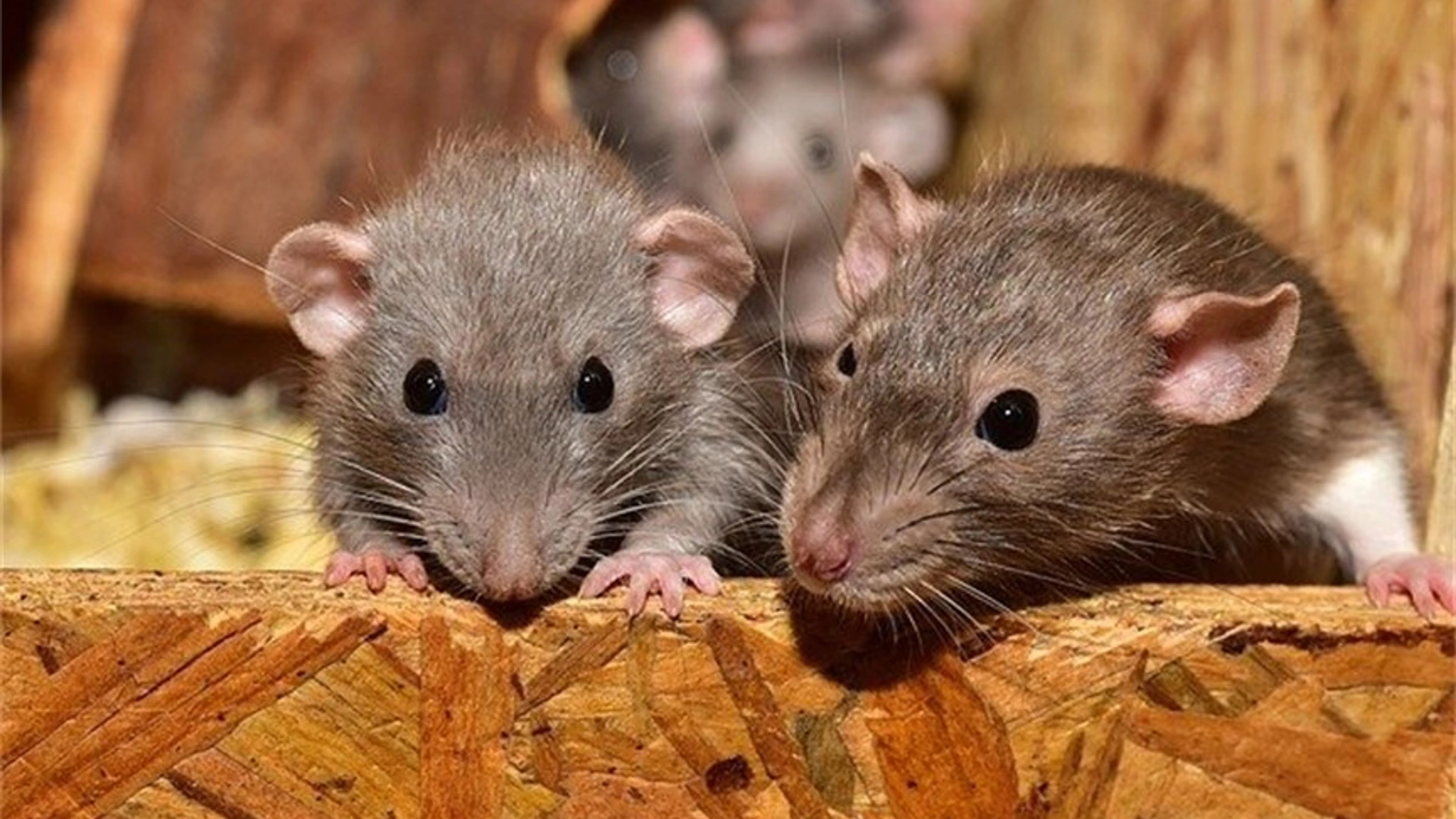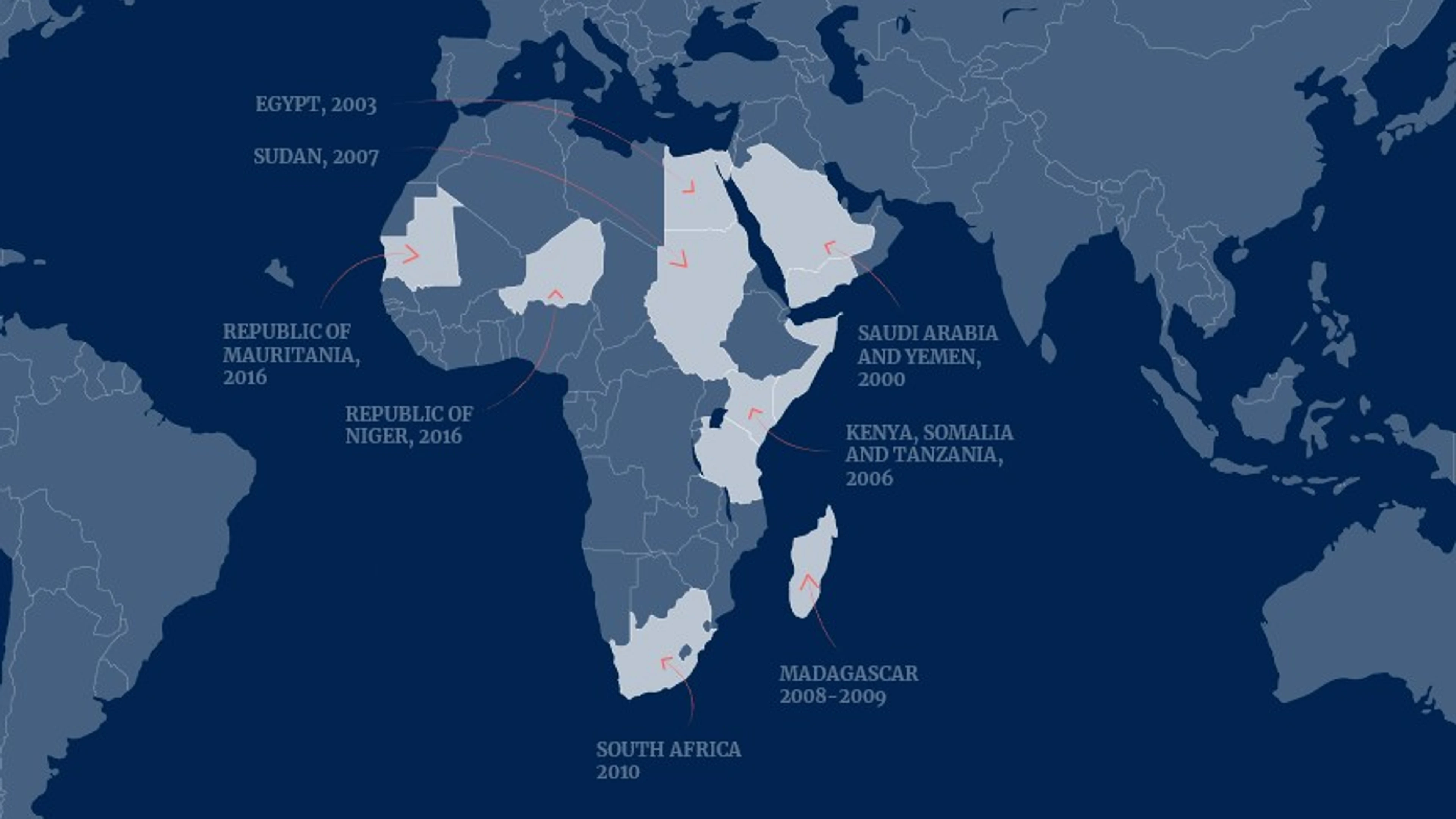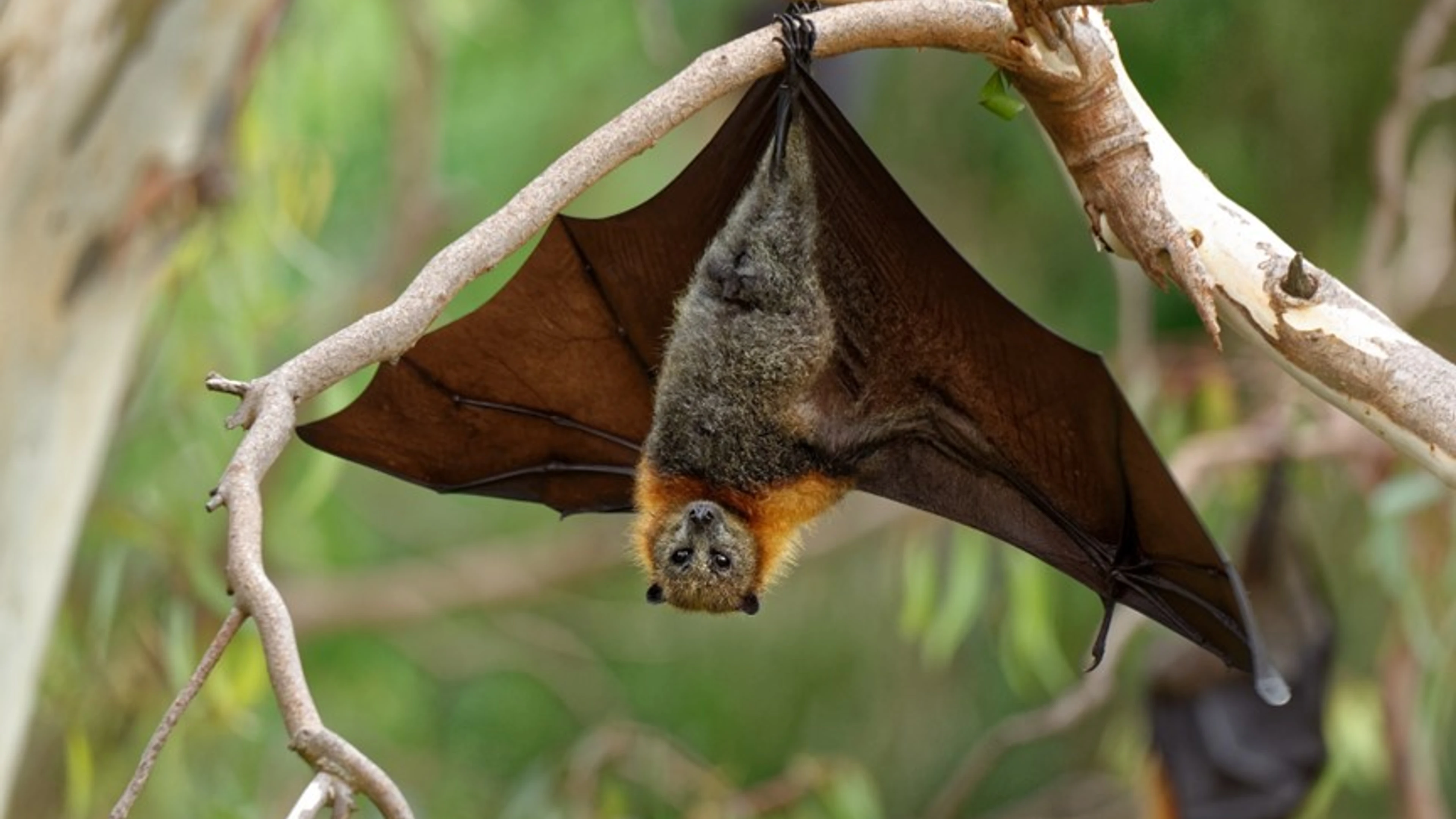How climate change increases pandemic risk

Read the article in Multimedia format
This article was amended on 29 November 2023 to reflect updates to CEPI's portfolio of priority pathogens.
In the city and at the hospital where Dr Nnennaya Ajayi works, in Abakaliki in southeastern Nigeria, the ever more evident effects of climate change are prompting ever more frequent influxes of two kinds of animals: people, and rats.
And because the rats come with a viral disease, the people come with it too.
"When they come into the clinics and the hospital, they have fever, nausea, body aches, muscle, joint and abdominal pain, and sometimes they also have red, bloodshot eyes," the doctor explains.
While it used to be that there was just one small cluster or local outbreak every two or three years, she says, those sporadic events have recently become a steady trickle. "And now this time, since August 2022, we've been seeing cases very regularly. We've had an ongoing outbreak."
The disease Dr Ajayi is describing is Lassa fever, a viral haemorrhagic infection named after the Nigerian town where it was first identified in 1969. The virus already causes tens of thousands of cases of infection and hundreds of untimely deaths each year across West Africa. With case fatality rates of as high as 15 percent in hospitalised patients with severe disease, and with no currently approved effective vaccines available, Lassa is rapidly climbing up epidemic worriers' watchlists.

Dr Nnennaya Ajayi outside Lassa fever treatment centre
CEPI is the leading funder of research for Lassa vaccines and has candidate shots in development with four partners across the world.
These include vaccine candidates being developed by Emergent Biosolutions and by IAVI, which have completed Phase I clinical trials in Ghana and Liberia respectively to assess safety and immunogenicity.
To support the development of these vaccines, CEPI has also created and funded the largest ever Lassa fever study (the ‘Enable' study) to provide a more accurate assessment of the incidence of Lassa fever infections in West Africa, and inform the design of late-stage Lassa vaccine trials. More than 20,000 participants have taken part in the study in Benin, Guinea, Liberia, Nigeria, and Sierra Leone.
DEADLY REACH
Rightly so, says Dr Ajayi: "Because it is considered a disease of the poor and the ignorant, it is one that has been undervalued. But we've already seen that people have transported Lassa across borders, so now it should be a disease of international importance."
Indeed, scientists at the University of Brussels in Belgium and at Scripp Research in the United States warned in a study published in September 2022 that climate change is causing Lassa fever to extend its deadly reach far beyond its Nigerian and West African origins.
By 2070, the study found, the number of countries across the whole of Africa that will develop the ecological conditions suitable for Lassa virus spread could drastically increase, potentially exposing hundreds of millions more people to the disease.
In Nigeria, Dr Ajayi explains, a warming planet has meant that in recent years, the dry seasons have become hotter, and the rainy seasons wetter. These "changes in the ecosystem" as she describes them, bring with them first fire, and then floods. In turn, both of these prompt rats and other rodents to get on the move and run for their lives. Fleeing flames and rising floodwaters, they invade towns and villages, seeking refuge and food in the homes of people living there.
MORE SPILLOVER
It's a scenario that is familiar to Professor Aaron Bernstein, Head of the Center for Climate, Health, and the Environment at Harvard T.H Chan School of Public Health and an expert in the risks of infectious disease ‘spillover'—a phenomenon where pathogens make a jump from animals or birds into humans and cause outbreaks of infectious disease.
Bernstein spoke to CEPI late last year as global leaders were gathering in Egypt for the COP27 Climate Change Conference. When it comes to novel emerging pathogens that spill over from animal species and become major pandemic threats, he said, climate-prompted migration—of all kinds of species including insects, mammals, and people—is at the heart of the problem.
"Climate change…is forcing everything that can to get out of the heat. And that means running to the poles or up mountainsides," Bernstein said.
This means that species that were previously geographically isolated and didn't run into each other's paths, are now running into each other with increasing regularity, raising the risk they'll spread viruses and other pathogens from one to another. Just like the rats that invade and spread diseases in human homes when they flee the flames and floodwaters of Nigeria's drier and rainier seasons.

Mastomys natalensis, the natural host for Lassa virus
DOMINO EFFECT
Dr Tim Endy agrees. CEPI's Disease X Project Leader and, for most of his career, a professional virus hunter, Endy says that in an ever warmer, wetter and more populated world, we need to be ever more alert to the threat of infectious diseases with pandemic potential.
"Above all, climate change affects the distribution, the abundance and the spread of vectors," he said. "And there's a multi-layer domino effect. It's not just about warming, but about changing environments. It's multifactorial and—importantly—it affects everything in CEPI's portfolio." As well as every country and region of the world.
In Egypt, for example, the host nation for COP 27, there was an outbreak more than four decades ago of a little-known disease called Rift Valley Fever. The viral disease, which affects both animals and humans—was first identified in 1931 during an outbreak of sudden deaths and abortions among sheep along the shores of Lake Naivasha in Kenya's Rift Valley, and had caused sporadic outbreaks in other parts of Africa since then.
But the 1977 Egyptian outbreak, which began in a man who came down with an acute febrile illness in the city of Belbies in the northeastern province of El-Sharquia, was the first big one in North Africa and by far the most explosive. Between 20,000 and 40,000 people were estimated to have been infected in an outbreak that persisted well into the following year—and more than 600 of them died.

Multiple Rift Valley Fever outbreaks have occurred between 2000 and 2016
RIFT VALLEY FEVER RISK
Exactly what brought Rift Valley Fever to Egypt in this deadly outbreak is still not known for sure, but two factors are regularly cited as the most likely causes. The first is that the virus hitched a ride from sub-Saharan Africa with Egyptian troops who were returning home from a peacekeeping mission in Congo; and the second is that the virus came into Egypt with imported animals—most probably sheep and camels from Sudan.
What is certain, however, is that since that outbreak 45 years ago, Egypt has seen several other major Rift Valley Fever outbreaks, and the disease has steadily but surely expanded its presence across the whole of the African continent, as well as into Yemen and Saudi Arabia on the Arabian peninsular.
CEPI's portfolio includes two programmes to advance Rift Valley fever vaccines.
Supported by funding from the European Union's Horizon Europe Programme, UC Davis are set to conduct Phase I and II trials of a novel Rift Valley fever vaccine candidate in Tanzania in 2024.
A vaccine candidate developed by Wageningen Bioveterinary Research is scheduled to enter Phase I/IIa clinical trials in 2025 in Kenya and Uganda.
Sites selected for these trials are in countries where the mosquito-borne diseases pose a significant threat to lives and livelihoods of people in rural communities.
CEPI's Director of Epidemiology and Data Science, Gabrielle Breugelmans, is in no doubt that with Rift Valley Fever, just as with Lassa and several other pathogens with pandemic potential, the rapidly changing climate is a driving force behind the rising numbers of cases and outbreaks, and also behind the increasing pandemic risk.
While with Lassa it is the rats and other rodents who are forced to seek new habitats due to climate change making it more difficult for them to find food and forcing them into new places to forage, with Rift Valley Fever it is disease-carrying insects—specifically mosquitos—that are expanding their reach as the climate becomes more mosquito-friendly in more and more regions of the world.
"If we don't act with urgency right now, the risk of spillover and the threat of pandemics is only going to increase as the climate change gathers pace and prompts all sorts of species—animal, human and insect—to migrate to areas where temperatures, rainfall and food availability suit them better," she says.
Numerous studies have warned about climate change exacerbating the frequency and range of infectious disease outbreaks. This one, published in 2019, found that a warming planet will lead to the expansion by thousands of miles of regions in which two of the most important mosquito vectors of disease—Aedes Aegypti and Aedes albopictus—can thrive and multiply.
"Within the next century, nearly a billion people could face their first exposure to viral transmission from either mosquito in the worst-case scenario, mainly in Europe and high-elevation tropical and subtropical regions," the study's authors warned.
And as well as for Rift Valley Fever, which is spread by mosquitoes as well as by flies and other biting insects, these and other types of mosquitoes are key transmitters of other epidemic infectious diseases such as Yellow Fever, Zika, Chikungunya, Dengue Virus, Japanese Encephalitis and malaria.
ANIMAL—HUMAN CONTACT
But it's not just rodents and mosquitoes that are finding new places to survive and thrive as previously inhospitable environments become warmer, wetter, and unfortunately, more disease-friendly. Other species, such as bats and birds, are also being forced out of forests and wetlands and are, in the process, more frequently coming into closer contact with the people who have encroached on their natural habitats.
A large study published in Nature last year pointed to bats as a particularly acute problem. "Owing to their unique dispersal ability, bats account for the majority of novel viral sharing and are likely to share viruses along evolutionary pathways that will facilitate future emergence in humans," it said.
Among the most worrying viral threats found in bats are the henipaviruses, of which the most famous is Nipah—a pernicious virus first discovered in Malaysia more than 20 years ago. Nipah causes a fatal inflammation of the brain, or encephalitis, and has so far killed seven out of every 10 people it has infected in a series of frightening outbreaks that have popped up thousands of miles apart—first in Malaysia and Singapore, and then in Bangladesh and India.

Pteropus fruit bats, the disease vector for Nipah virus
FLYING FOXES
Nipah comes from a group of pathogens known as the paramyxoviruses: the same family of viruses as measles, mumps, and the equally worrying Hendra virus. It is high on the World Health Organization's priority list of pathogens with deadly epidemic potential, and is a focus area for CEPI's research and development. It's also a virus that is finding increasingly frequent opportunities to get into people as the animals that carry it—fruit bats or ‘flying foxes' as they are also known—see their once remote forest habitats being gradually eroded and encroached upon by humans.
In the case of the first known Nipah outbreak in Malaysia in 1999, it was pig farmers that had newly developed land that was once uncultivated forest.
A recent study on bat ecology and spillover risk by researchers at Montana State University in the United States, published in Nature in November 2022, focussed on Hendra, a henipavirus closely related to Nipah, and found that "interactions between land-use change and climate now lead to persistent bat residency in agricultural areas, where periodic food shortages drive clusters of spillovers".
As Ari Bernstein warns: "With huge livestock operations happening around the world in more places, there's more opportunity for pathogens to spill into people. We've seen that certainly with influenza pandemics, and we saw it with the outbreak of Nipah virus in Malaysia, where bats infected domesticated pigs who spread it to people."
Such bat-human contact was also the spark for an outbreak in January 2023 of Nipah virus in Bangladesh, in which at least 10 people were infected, and eight cases were fatal. Local public health officials warned people not to drink raw date juice and avoid picking up fruits that may already have been nibbled on by bats, or been contaminated by bat urine or faeces.
CEPI is supporting the development of three early-stage Nipah vaccine candidates.
One candidate has completed Phase 1 testing and another is currently being assessed in Phase 1 clinical trials. These two vaccines are currently among the most advanced Nipah vaccine candidates in the world.
So far at least outbreaks of Nipah have been relatively small and have also been confined to two main regions: South and Southeast Asia. But this virus is highly deadly, and its outbreak potential is increasing all the time, largely due to the fact that its animal vectors, the flying fox Pteropus fruit bats, are already common, and becoming more so, throughout tropical and sub-tropical regions all over the world. Those tropical areas are also now home to more than two billion people.
RAPID CHANGE
So what about Disease X? This as-yet-unknown virus is already a certain future threat, and one that rides high on the World Health Organization's as well as CEPI's pandemic risk list. More alarmingly, a changing climate is only making the risk yet higher that a new Disease X will spill over from animals and spark a deadly novel outbreak.
Dr Anne Spurkland, a molecular immunologist and professor of anatomy at the University of Oslo, says it's also the rapidity of change that heightens the risk.
"Humans are accustomed to the viruses and bacteria that have been around for many decades, but every time there is a change in living conditions for humans and other life forms, there are opportunities for shifting the balance," she said in an interview with CEPI.
"Environmental change is happening at a much higher speed now than before, so that increases the likelihood that there will be (spillover of) pathogens and microbes which none of us are adapted to. And where there is lack of immunity, things can spread quickly to the whole (human) population."
That's not to say we are helpless in the face of these increasingly imminent risks. Whether it be a re-emerging known viral threat—like Lassa—that's sparking more frequent and larger human outbreaks, or the next Disease X threat that will one day spill over and begin to spread as a new human virus, humanity has the scientific knowledge and the technical capability to contain such outbreaks before they run out of control. Investing now in boosting global disease surveillance and early warning systems, as outlined in the 100 Days Mission, and in scientific research to prepare for known and as-yet-unknown epidemic diseases, will mean that—just like with climate change—we can begin to cap the rising risks, turn the tide of threats, and eventually neutralise their pandemic potential.
Learn more about CEPI's work to end pandemics.


